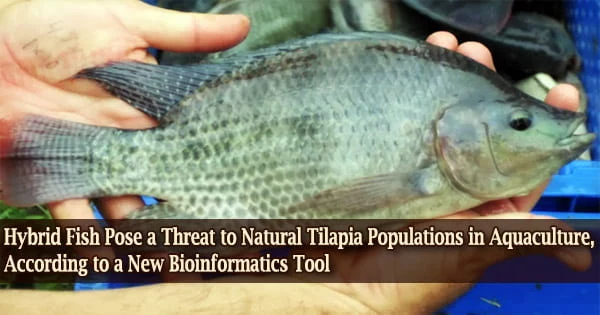A new genetic marker technique has been shown to properly identify tilapia species and distinguish hybrids, giving a new resource to aid aquaculture development and conservation in Tanzania.
Importantly, the new technology is a less expensive alternative to whole genomic data analysis, which is the existing method of monitoring local biodiversity.
Led by the Earlham Institute, alongside the Tanzania Fisheries Research Institute, Roehampton University, Bangor University, the University of Bristol, and the University of East Anglia in the UK, the new genomics marker tool enables tilapia species identification and pinpoints hybridization between invasive and native tilapia species.
Inland aquaculture production in the tropics has expanded dramatically in recent decades, reaching 47 million tonnes in 2018. Tilapia, a genus of cichlid fish native to Africa and the Middle East and dominated by the genus Oreochromis, have been a crucial element of this expansion, accounting for 5.5 million tonnes of the global total.
In Africa, where climate change and population growth are putting vulnerable food production systems under even more strain, further expansion of inland aquaculture is critical.
African fisheries are suffering from physical and chemical changes to the aquatic environment as the temperature of inland waters rises as a result of climate change.
This, combined with the continued population growth in Sub-Saharan Africa and Asia, which is expected to reach 9 billion people by 2100, raises concerns about food security. Tilapia are endemic to Africa, and East Africa, particularly Tanzania, is a hotspot for tilapia species variety.
Tanzania has at least eight fully endemic Oreochromis species and another 12 species that are endemic to shared catchments with neighboring nations.
One of the major difficulties in tilapia aquaculture lies with the discrimination of species. This currently relies on morphological traits, which are particularly a problem to identify in females and juveniles. This in turn can lead to accidental stock contamination.
Dr. Adam Ciezarek
Several of these species have evolved to extreme climatic circumstances, such as high temperatures, salinity, and pH, and could be useful in aquaculture in the future.
Lead author Dr. Adam Ciezarek, Postdoctoral Scientist in the Haerty Group at the Earlham Institute, said: “One of the major difficulties in tilapia aquaculture lies with the discrimination of species. This currently relies on morphological traits, which are particularly a problem to identify in females and juveniles. This in turn can lead to accidental stock contamination.”
Non-native farmed tilapia populations (Oreochromis niloticus) are also reported to be widely dispersed over Africa and to hybridize with native Oreochromis species. An optimized design based on 96 single nucleotide polymorphisms (SNPs) biomarkers was created in response to the necessity to properly distinguish species while also identifying potential hybrids in a cost-effective and speedier manner.
This method has also been shown to be more accurate than microsatellite or morphological interspecific hybrid detection. Tilapia are a crucial group of fish for aquaculture.
Farmed strains have been introduced as non-native species into numerous water bodies, posing a challenge in locations where natural tilapia species are susceptible to hybridization. Hybrid tilapia have a lower survival rate and grow more slowly, posing a threat to natural populations. This also jeopardizes the survival of tilapia farms, as wild populations are frequently taken.
The farm may fail if they stock what they think are pure species that are good for farming but are actually slow-growing hybrids. It’s critical to be able to identify these hybrids, yet separating them from pure tilapia species only on the basis of morphological traits is inaccurate.
“We have shown that it is possible to identify them using full-genome data. Crucially, we have also demonstrated that a vastly reduced set of 96 SNPs can perform just as well with greater efficiency and precision, and at a much lower cost,” says Dr. Adam Ciezarek.
Lead co-author Prof George Turner, School of Natural Sciences at Bangor University, said: “Case studies indicate several locations where introduced aquaculture species have become established in the wild, threatening native Oreochromis species in Tanzania. At present, native Oreochromis species are poorly characterised, and their conservation could benefit from the identification of purebred populations for protection.”
“Such safeguarding of the wild relatives of farmed species would also protect unique genetic resources that could be used to enhance traits in cultured Oreochromis cichlid strains.”
Dr Ciezarek added: “The novel SNP markers represent an important resource for assessing broodstock purity in fishery hatcheries, helping to conserve unique endemic biodiversity. We hope that this more affordable and convenient tool will be used to accurately assess potential farm stocks, as well as surveying natural water bodies for evidence of hybridisation between tilapia.”
The paper “Whole genome resequencing data enables a targeted SNP panel for conservation and aquaculture of Oreochromis cichlid fishes” is published in Aquaculture.
This study was funded by the UKRI Biotechnology and Biological Sciences Council, the Royal Society, and the Leverhulme Trust.





